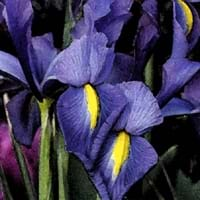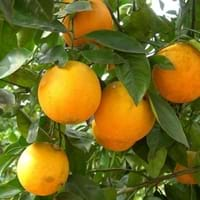Life Span
Perennial
Perennial
Type
Herbaceous Perennial
Fruit
Origin
Hybrid origin
Southeastern Asia, India, China
Types
Not Available
Louisiana sweet orange is a type of sweet orange which is a type of oranges
Number of Varieties
Not Available
Habitat
meadows, Riverbanks, Rocky Mountains
Dry areas, Warmer regions
USDA Hardiness Zone
5-9
9-11
Sunset Zone
2b, 3a, 3b, 4, 5, 6, 7, 8, 9, 10, 11, 12, 13, 14, 15, 16, 17, 18, 19, 20, 21, 22, 23, 24
H1, H2, 8, 9, 12, 13, 14, 15, 16, 17, 18, 19, 20, 21, 22, 23, 24
Habit
Clump-Forming
Oval or Rounded
Flower Color
White, Yellow, Blue, Purple, Orange, Pink, Rose, Coral, Peach, Burgundy, Lavender, Plum, Orange Red, Dark Salmon, Bronze, Chocolate, Black
White, Red, Purple
Flower Color Modifier
Bicolor
Bicolor
Fruit Color
Not Available
Green, Orange
Leaf Color in Spring
Green, Light Green, Gray Green
Dark Green
Leaf Color in Summer
Yellow green
Dark Green
Leaf Color in Fall
Not Available
Dark Green
Leaf Color in Winter
Light Green
Light Green
Leaf Shape
Sword-like
Ovate
Plant Season
Spring
Spring, Summer, Fall, Winter
Sunlight
Full Sun, Partial Sun
Full Sun
Growth Rate
Medium
Medium
Type of Soil
Clay, Loam, Sand
Loam, Sand
The pH of Soil
Acidic, Neutral, Alkaline
Acidic, Neutral, Alkaline
Soil Drainage
Well drained
Well drained
Bloom Time
Early Spring, Spring, Late Spring
Early Spring, Spring, Late Winter
Tolerances
Drought
Drought
Where to Plant?
Ground
Ground
How to Plant?
Root Plants
Seedlings
Plant Maintenance
Medium
High
Watering Requirements
Average Water Needs
Reduce watering during fall, Requires regular watering
In Summer
Lots of watering
Average Water, Ample Water
In Spring
Moderate
Adequately
In Winter
Average Water
Alternate Days
Soil pH
Acidic, Neutral, Alkaline
Acidic, Neutral, Alkaline
Soil Type
Clay, Loam, Sand
Loam, Sand
Soil Drainage Capacity
Well drained
Well drained
Sun Exposure
Full Sun, Partial Sun
Full Sun
Pruning
Remove damaged leaves, Remove dead branches, Remove dead leaves
Prune to stimulate growth, Remove dead leaves
Fertilizers
All-Purpose Liquid Fertilizer
fertilize every 2-3 weeks while growing, fertilize in growing season, fertilize in spring
Pests and Diseases
Bacteria, fungus, Viruses
Aphids, Caterpillars, Mealybugs, Mites, Rust, Scale, Spider mites, Whiteflies
Plant Tolerance
Drought
Drought
Flower Petal Number
Single
Single
Fragrant Bark/Stem
No
Yes
Foliage Texture
Fine
Medium
Foliage Sheen
Matte
Glossy
Attracts
Butterflies, Hummingbirds
Birds, Butterflies
Allergy
Not Available
Not Available
Aesthetic Uses
Beautification, Showy Purposes
Showy Purposes
Beauty Benefits
Not Available
Improve hair condition, Improve skin condition, Making cosmetics, Removes dandruff
Environmental Uses
Air purification
Not Available
Medicinal Uses
Not Available
Vitamin C
Part of Plant Used
Flowers, Root
Fruits
Other Uses
Basketary, Used for fragrance
Used As Food
Used As Indoor Plant
No
No
Used As Outdoor Plant
Yes
Yes
Garden Design
Cutflower, Foundation, Mixed Border, Rock Garden, Wall
Container, Edible, Feature Plant, Fruit / Fruit Tree, Hedges, Screening / Wind Break, Topiary / Bonsai / Espalier, Tropical
Botanical Name
IRIS 'Apollo'
CITRUS sinensis 'Louisiana Sweet'
Common Name
Carmen Iris, Dutch Iris
Louisiana Sweet Orange, Orange
In Hindi
Dutch Iris
Lousiana नारंगी
In German
Dutch Iris
Lousiana Orange
In French
Dutch Iris
Lousiana d'orange
In Spanish
Dutch Iris
Lousiana naranja
In Greek
Dutch Iris
Lousiana πορτοκαλί
In Portuguese
Dutch Iris
Lousiana laranja
In Polish
Dutch Iris
Lousiana pomarańczowy
In Latin
Dutch Iris
louisiana aurantiaco
Phylum
Magnoliophyta
Not Available
Class
Magnoliopsida
Not Available
Family
Iridaceae
Rutaceae
Clade
Angiosperms, Monocots
Not Available
Tribe
Irideae
Not Available
Subfamily
Iridoideae
Not Available
Number of Species
Not Available
Season and Care of Dutch Iris and Louisiana Orange
Season and care of Dutch Iris and Louisiana Orange is important to know. While considering everything about Dutch Iris and Louisiana Orange Care, growing season is an essential factor. Dutch Iris season is Spring and Louisiana Orange season is Spring. The type of soil for Dutch Iris is Clay, Loam, Sand and for Louisiana Orange is Loam, Sand while the PH of soil for Dutch Iris is Acidic, Neutral, Alkaline and for Louisiana Orange is Acidic, Neutral, Alkaline.
Dutch Iris and Louisiana Orange Physical Information
Dutch Iris and Louisiana Orange physical information is very important for comparison. Dutch Iris height is 25.40 cm and width 12.70 cm whereas Louisiana Orange height is 460.00 cm and width 300.00 cm. The color specification of Dutch Iris and Louisiana Orange are as follows:
Dutch Iris flower color: White, Yellow, Blue, Purple, Orange, Pink, Rose, Coral, Peach, Burgundy, Lavender, Plum, Orange Red, Dark Salmon, Bronze, Chocolate and Black
Dutch Iris leaf color: Green, Light Green and Gray Green
Louisiana Orange flower color: White, Red and Purple
- Louisiana Orange leaf color: Dark Green
Care of Dutch Iris and Louisiana Orange
Care of Dutch Iris and Louisiana Orange include pruning, fertilizers, watering etc. Dutch Iris pruning is done Remove damaged leaves, Remove dead branches and Remove dead leaves and Louisiana Orange pruning is done Prune to stimulate growth and Remove dead leaves. In summer Dutch Iris needs Lots of watering and in winter, it needs Average Water. Whereas, in summer Louisiana Orange needs Average Water, Ample Water and in winter, it needs Alternate Days.





